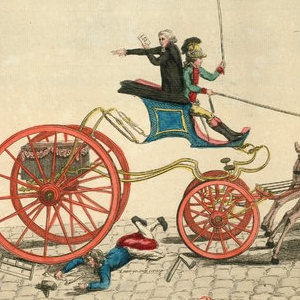Social Structure

Monks Learning to Exercise.
This image ridicules monks for contributing nothing to society, either economically or demographically, by depicting a group of them being taken from the monastery and drafted into the army, where they hope "to become good citizens" as was expected under religious restructuring during the French

The Third Estate Marrying Priests with Nuns
The National Assembly also eliminated monasteries during the French Revolution, since monks and nuns had increasingly become figures of ridicule. This image depicts the dissolution of the religious orders, rather than the confiscation of lands, as the crucial element in religious reorganization.
Constitution of the Lacedaemonians
Very little extant information exists on the life of Spartan women, but one of the main sources is Xenophon, Constitution of the Lacedaemonians which catalogs Sparta's institutions and customs with the goal of explaining how Sparta came to be a powerful city-state despite its relatively small pop
Attack on Seigneurial Dues
The petitions from rural communities focused in part on the abuse of seigneurial dues owed by peasants to lords for which, in principle, they received protection and supervision.
Babeuf’s Trial
Long after sans–culotte influence on the government had waned, social conflicts continued to drive some revolutionary events.

Inside a Revolutionary Committee during the Reign of Terror
The extremely respectful view of sans–culotte militancy is evident in this image, engraved by the French Revolutionary sculptor Berthault and based on a painting by Fragonard, the son of the famous old regime painter.
Manifesto of the Enragés
Jacques Roux, a former priest turned radical French revolutionary, became the leading voice for a group known as the "Enraged," because they expressed constant anger at the unfairness shown toward the ordinary, poor people who made up the bulk of the patriotic citizenry and whose plight Roux dema

The Good Sans–Culotte
Reflecting values of the French Revolution, Male and female sans–culottes were supposed to embody frugality, thrift, hard work, and, above all, honest devotion—whether to pets, the nation, or fellow comrades.

Abuses to Suppress
This French Revolution era print depicts the Third Estate—represented by the peasant at the rear of the chariot, the worker leading the horse, and the merchant driving—delivering to the National Assembly a petition listing "abuses" to be remedied.
Le Chapelier Law
In the spring of 1791, as the National Assembly worked on political and social reforms, workers in Paris took economic matters into their own hands by staging a series of strikes and demonstrations against their employers.